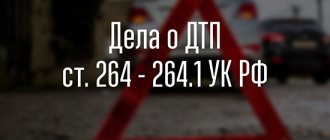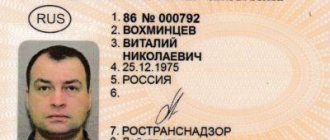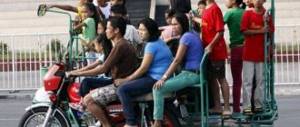Summer is not only the holiday season, but also the time of children's holidays. Accordingly, during this period you can see entire columns of buses with children heading to children's camps.
Such transportation must be carried out in accordance with special requirements regulated by current legislation. The carrier is obliged to provide minor passengers with maximum safety and comfort. To reduce the likelihood of injury to children during transportation, the law establishes a number of requirements that must be observed by both the driver and other adults on board the bus.
Rules for transporting children on the bus
Children's bus trips can be carried out not only in the summer, but also during the school year. Most often, groups of students are transported in the following cases:
- when visiting excursions;
- when traveling on holidays;
- when organizing country outings;
- when traveling to competitions, etc.
When transporting children, the responsible person must be guided by the rules established by the Ministry of Transport of the Russian Federation. General rules for organizing trips with the participation of minors are specified in Decree of the Government of the Russian Federation No. 1177. This document came into force in 2013. Additions to this regulatory act were published in 2015 and were included in the Decree of the Government of the Russian Federation No. 652.
Judicial practice under Article 12.23 of the Code of Administrative Offenses of the Russian Federation:
Supreme Court decision: Resolution No. 19-AD15-10 of 08/12/2015 Judicial Collegium for Administrative Cases, supervision
Supreme Court decision: Resolution N 88-AD17-1 of 06/05/2017 Judicial Collegium for Administrative Cases, supervision
Supreme Court decision: Resolution No. 44-AD14-3 of June 30, 2014 Judicial Collegium for Administrative Cases, supervision
Decision of the Supreme Court: Determination N 44-G09-13 of 07/08/2009 Judicial Collegium for Civil Cases, cassation
Supreme Court decision: Resolution No. 16-AD13-3 of 07/09/2013 Judicial Collegium for Administrative Cases, supervision
Supreme Court decision: Resolution N 18-AD16-153 of June 29, 2016 Judicial Collegium for Administrative Cases, supervision
Supreme Court decision: Resolution N 44-AD15-1 of March 24, 2015 Judicial Collegium for Administrative Cases, supervision
Supreme Court decision: Resolution No. 10-AD14-7 of July 15, 2014 Judicial Collegium for Administrative Cases, supervision
Supreme Court decision: Resolution No. 9-AD17-1 of 03/06/2017 Judicial Collegium for Administrative Cases, supervision
Supreme Court decision: Resolution N 45-AD17-1 of 02/16/2017 Judicial Collegium for Administrative Cases, supervision
- First
- «
- Last
Comments ()
Write a comment
What changed
According to the new rules, transportation of minors is permitted only in the presence of two parents. Instead, authorized representatives may take part in the trip. Thus, if there are two parents in addition to children on the bus, transportation can be carried out without complying with special rules.
Legal representatives of minors may be:
- health workers;
- group accompaniments.
If a group of children is transported accompanied by parents or authorized representatives, then they must take care of ensuring the safety of minors.
Updated requirements for buses
Transport intended for transporting children must meet the following requirements:
- Speed Limit. When transporting children, the driver cannot exceed the established speed limit (60 km/h). If the bus can reach a speed above this limit, then a limiter must be installed on it.
- The presence of an automatic warning system that turns on when reversing.
- The bus must be painted yellow. On the sides there are the inscriptions “Children”.
In addition, GOST 33552-2015 establishes a number of rules for the arrangement of seats in the cabin, as well as the equipment of the driver’s seat. Passenger seats must be equipped with restraint systems.
Conditions for transporting children
Let's consider the general rules for transporting minors:
- It is prohibited to transport children on buses that have the status of public transport. If a vehicle is assigned to a specific route, then it cannot be used for irregular passenger transportation.
- The bus must have more than 8 passenger seats.
- The total number of buses is more than three.
- Each driver transporting minors must have the appropriate permit in hand. You can get it from the traffic police. Having stopped the bus, the traffic police officer has the right to demand that the driver provide this document. Until 2016, drivers were required to carry the original permit. You can provide a copy today.
- Transportation of minors must be carried out from 6 am to 11 pm. It is allowed to transport children only during daylight hours. The exception is the use of airplanes or trains as transport. Also, transporting children in the dark is permissible in emergency cases related to difficult weather conditions, vehicle breakdowns, etc. The maximum speed when driving in poor lighting conditions is 50 km/h.
What documents are needed to organize the transportation of children?
A group of children cannot move just like that, without a documentary basis. Therefore, the organizers collect a package of documents before the start of the trip.
- A charter agreement, which is required if the trip is organized with an organization under a contract.
- Documents from parents with a signature stating that they are not against the child’s trip and are notified of the route.
- Detailed route by time, with scheduled stops along the way (where, what time, for how long).
- Documents confirming the traffic police’s awareness of the planned trip. Or documents confirming the purpose of escorting traffic police vehicles.
- Lists of children: full name, age, what bus they are on, what seat they are sitting in.
- Lists of escorts: full name, passport details, which bus, what seat he is sitting in.
- Driver data.
- Bus data.
- Lists of products prepared for children.
- Boarding list for children and accompanying persons. May be part of the charter agreement.
All these documents must be presented to inspectors at checkpoints (upon request). If any document is missing, it is possible that the trip may be suspended.
We make an application to the traffic police
A correctly drawn up document must contain the following information:
- Departure date and time.
- Route information.
- Number of buses used to transport children. Models, brands, and license plate numbers of vehicles are indicated.
- Data on the credentials of persons authorized to drive buses.
- Information about the customer.
- Information about persons responsible for transporting minors.
- Carrier details.
- Number of minors.
What is the penalty for violation?
Punishment is discussed in the Code of Administrative Offenses (Article 12.23). If the rules are not followed, a fine will be imposed for driving without a child seat. The size of this amount is influenced by a number of factors. The main one is the legal status that the driver of the vehicle has.
For individuals
Most often, one of the child’s parents is the perpetrator. Such citizens are classified as individuals. For them, the fine for transporting children without a seat in 2021 is 3 thousand rubles. The amount of the penalty may be increased if such a violation has been recorded more than once.
The amount increases if the driver is an official. In 2019, the fine for transporting a child without a seat for this category is 25 thousand rubles. In addition, other penalties may apply.
For taxi
The largest amount of recovery is provided for legal entities. These include owners of transportation services, which must have special seats for children, available upon request. If they are not there, then in 2021 the fine for the absence of a child seat reaches 100 thousand rubles. By law, the owner of the enterprise, and not the driver himself, is required to pay this amount.
Driver requirements
To carry out organized transportation of children, the driver must meet certain requirements. Let's look at them in more detail:
- Availability of open category D.
- Driving experience – at least one year.
- No serious traffic violations over the past year. We are talking about those offenses for which liability is provided in the form of deprivation of a driver's license or arrest.
- On the day of departure, the driver must undergo a medical examination in accordance with the established procedure.
- The driver must undergo training regarding the rules for transporting children.
Tighten the nuts
A violation when transporting organized groups of children on buses may be considered, for example, the absence of a charter agreement, a route program, a list of children and adults accompanying them.
The absence of these documents now threatens a fine for the driver in the amount of three thousand rubles, for officials - 25 thousand rubles, and for legal entities - 100 thousand rubles.
The law introducing such changes was signed by Russian President Vladimir Putin on May 1 and published on the official legal information portal. In total, on Spring and Labor Day, the head of state signed 21 laws and one order, and on May 2 - three more laws and 4 orders.
Another innovation is administrative liability for violation of established requirements for transporting children at night. In this case, the driver will pay five thousand rubles or lose his driver’s license for a period of four to six months. Officials will pay 50 thousand rubles for this offense, legal entities - 200 thousand.
Until now, fines were provided only for drivers and only for violating traffic rules.
When transporting children in an organized manner, control over who is carrying out the transport is required. The driver undergoes a medical examination, the bus undergoes diagnostics. But not all transport companies comply with these requirements, just as not all educational institutions use the services of proven and reliable companies. Experts believe that the new law will at least help protect children and teenagers from injuries while the bus is moving.
The innovations do not end there: Vladimir Putin also signed another law that tightens responsibility for the transportation of passengers and cargo. Thus, administrative liability has been introduced for violating the requirement to prohibit drivers from transporting passengers and cargo without undergoing appropriate training.
Violation threatens officials with a fine of ten thousand rubles, legal entities will be fined 30 thousand rubles.
For carrying out entrepreneurial activities in the field of transport, including road transport and urban ground electric transport (trams, trolleybuses, metro and others), in violation of the conditions stipulated by the issued license, a fine of 20 thousand rubles is imposed for officials and individual entrepreneurs. 100 thousand rubles will have to be given to legal entities.
Legal entities that violate the terms of the vehicle license issued to them will pay 100 thousand rubles as a fine.
For gross violations, a fine of 75 thousand rubles will be imposed on officials and individual entrepreneurs, and 200 thousand rubles on legal entities. Transport workers may also be subject to other sanctions, for example, suspension of their activities for up to 90 days.
At the beginning of 2014, the Russian Ministry of Transport approved rules for ensuring the safety of passenger and freight transportation, which also applied to ground electric transport. At the same time, a list of measures was prepared to prepare private carriers for safe operation, and their vehicles for safe operation.
The problem was that the current legislation did not provide for any liability if the rules were not followed. The new law fills this gap.
What requirements must a bus meet?
Transportation of children can only be carried out in specially equipped vehicles. Let's consider the general requirements for buses:
- Lifetime. The bus must not be older than 10 years.
- Transport must be equipped with a GLONASS navigation system.
- Having a tachograph is mandatory.
- The bus must have a valid diagnostic card. It is important that the vehicle undergoes technical inspection in a timely manner. This should be confirmed by notes in the diagnostic chart.










